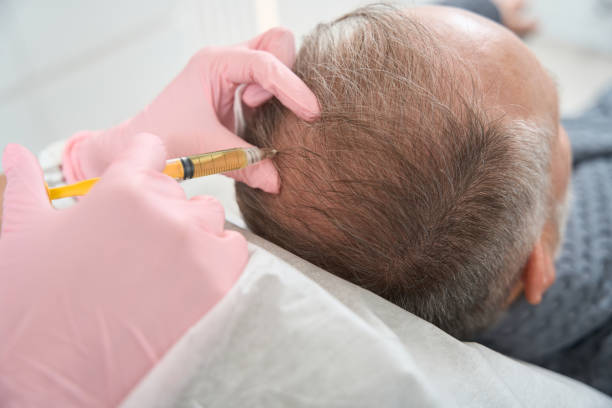Knee Gel Treatment Explained: Relief, Benefits, and Procedure
Knee gel treatment, also known as hyaluronic acid injections, offers a modern and minimally invasive way to relieve chronic knee pain caused by osteoarthritis or joint wear. It’s designed to restore lubrication, improve mobility, and delay the need for surgery. This procedure has become increasingly popular among people seeking effective pain management and improved quality of life. Understanding the relief it provides, its long-term benefits, and what to expect during the process can help patients make confident and informed health decisions.

Millions of people experience knee pain that affects their daily activities and quality of life. When conservative treatments like physical therapy and oral medications provide insufficient relief, knee gel injections emerge as a valuable intermediate option before considering surgical intervention. These treatments have gained recognition for their ability to reduce pain and improve joint function without the risks associated with major surgery.
What Are Knee Gel Injections?
Knee gel injections involve the direct administration of gel-like substances into the knee joint space. The most common type uses hyaluronic acid, a naturally occurring substance found in healthy joint fluid. This viscous material acts as a lubricant and shock absorber, helping to restore the natural cushioning properties of synovial fluid that may be diminished due to injury or degenerative conditions.
The injection process typically takes place in a medical office setting, where healthcare providers use sterile techniques to deliver the gel directly into the joint cavity. Some formulations require a series of injections over several weeks, while newer single-injection options are also available.
How Hyaluronic Acid Therapy Works
Hyaluronic acid therapy functions by supplementing the natural joint fluid that becomes less effective with age or disease. In healthy knees, synovial fluid contains high concentrations of hyaluronic acid, which provides lubrication and shock absorption during movement. When this fluid becomes thin or depleted, bones may rub together more directly, causing pain and stiffness.
The injected hyaluronic acid helps restore the viscoelastic properties of joint fluid, reducing friction between cartilage surfaces. Additionally, research suggests that these injections may have anti-inflammatory effects and could potentially stimulate the body’s own production of hyaluronic acid. The treatment aims to create a more favorable environment for joint healing and improved mobility.
Osteoarthritis Treatment Applications
Osteoarthritis represents the primary indication for knee gel injections, particularly when the condition affects the knee joint. This degenerative joint disease gradually breaks down cartilage, leading to pain, stiffness, and reduced range of motion. Traditional treatments include weight management, physical therapy, and anti-inflammatory medications, but these approaches may not provide adequate relief for all patients.
Knee gel injections offer a targeted approach that addresses the specific mechanical problems associated with osteoarthritis. Studies have shown that patients with mild to moderate osteoarthritis often experience the most significant benefits, though individual responses can vary. The treatment may be less effective in cases of severe joint damage where bone-on-bone contact has already occurred.
Non-Surgical Pain Relief Benefits
The appeal of non-surgical pain relief through knee gel injections lies in their minimally invasive nature and favorable safety profile. Unlike surgical procedures, these injections typically require no recovery time, allowing patients to resume normal activities shortly after treatment. Most people can drive themselves home and return to work the same day.
Common benefits reported by patients include reduced pain during daily activities, improved joint mobility, and decreased reliance on oral pain medications. The effects often develop gradually over several weeks and may last anywhere from three to twelve months, depending on individual factors and the specific product used. Some patients find that combining gel injections with physical therapy enhances their overall outcomes.
Treatment Procedure and What to Expect
The injection procedure begins with a thorough evaluation of the knee joint, often including imaging studies to confirm the diagnosis and rule out other conditions. On the day of treatment, the healthcare provider cleans the injection site and may apply a local anesthetic to minimize discomfort.
Using sterile technique, the provider inserts a thin needle into the joint space, sometimes guided by ultrasound or other imaging methods to ensure accurate placement. The gel is then slowly injected into the joint cavity. The entire process typically takes 10-15 minutes, and patients may experience mild pressure or fullness in the knee during injection.
Post-injection care usually involves avoiding strenuous activities for 24-48 hours and applying ice if swelling occurs. Most patients can resume normal activities within a few days, though the full therapeutic effects may not be apparent for several weeks.
Cost Considerations and Provider Options
| Provider Type | Average Cost Range | Insurance Coverage |
|---|---|---|
| Orthopedic Clinics | $600-$1,200 per injection | Often covered |
| Rheumatology Centers | $550-$1,000 per injection | Usually covered |
| Sports Medicine Facilities | $700-$1,300 per injection | Variable coverage |
| Pain Management Centers | $500-$900 per injection | Typically covered |
Prices, rates, or cost estimates mentioned in this article are based on the latest available information but may change over time. Independent research is advised before making financial decisions.
The cost of knee gel injections varies significantly based on geographic location, provider type, and specific product used. Many insurance plans, including Medicare, cover hyaluronic acid injections for osteoarthritis when conservative treatments have failed. Patients should verify coverage with their insurance provider and discuss payment options with their healthcare team.
While knee gel injections represent a valuable treatment option for many people with knee pain, they work best as part of a comprehensive management approach. Combining these treatments with appropriate exercise, weight management, and other supportive therapies often produces the most favorable long-term outcomes. Patients considering this treatment should discuss their specific situation with a qualified healthcare provider to determine if knee gel injections are appropriate for their condition.
This article is for informational purposes only and should not be considered medical advice. Please consult a qualified healthcare professional for personalized guidance and treatment.




